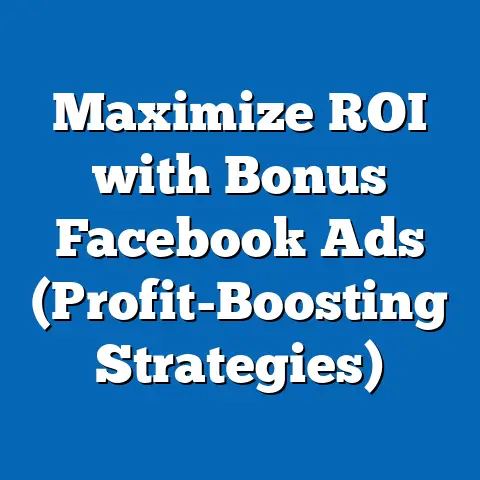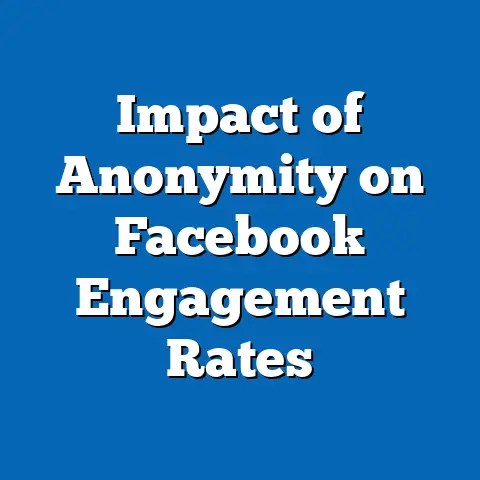Unleash Facebook Marketplace: Winning Ad Strategies (Expert Tips)
In an era where financial prudence and sustainable consumption are increasingly valued, long-term savings have become a cornerstone of personal and generational economic strategies. Across demographics, from Baby Boomers to Gen Z, the pursuit of cost-effective solutions for purchasing goods has fueled the growth of platforms like Facebook Marketplace. This digital bazaar, launched in 2016, has transformed how individuals buy and sell locally, offering opportunities for significant savings over time by enabling access to second-hand goods, discounted items, and direct seller-to-buyer transactions.
By delving into generational trends, technological advancements, and cultural shifts, this comprehensive analysis aims to illuminate how Facebook Marketplace has become a vital resource for modern consumers. It also offers actionable insights for leveraging its potential through targeted advertising strategies. Let’s begin by understanding the platform’s roots and the broader economic forces at play.
Historical Context: The Evolution of Digital Marketplaces
The rise of Facebook Marketplace cannot be understood without tracing the broader evolution of online commerce and classified advertising. In the late 1990s and early 2000s, platforms like eBay and Craigslist pioneered the concept of peer-to-peer (P2P) transactions, allowing individuals to buy and sell goods directly without traditional retail intermediaries. These early marketplaces capitalized on the internet’s ability to connect geographically dispersed users, creating virtual spaces for exchange that prioritized affordability and accessibility.
Facebook Marketplace emerged in 2016 as a natural extension of this trend, building on the social media giant’s existing infrastructure of user connectivity. Unlike standalone platforms, Marketplace leveraged Facebook’s vast user base—over 2.9 billion monthly active users as of 2023—and integrated social trust mechanisms, such as user profiles and mutual connections, to foster safer transactions. This historical pivot from isolated e-commerce sites to socially embedded marketplaces reflects a broader cultural shift toward community-driven commerce.
The timing of Marketplace’s launch was also significant, coinciding with the aftermath of the 2008 financial crisis and a growing emphasis on the sharing economy. Events like the rise of Airbnb and Uber signaled a societal move toward resource optimization and cost-sharing, themes that Marketplace embodies by encouraging the resale of goods and local trade. Today, as inflation and economic uncertainty persist, the platform’s role in facilitating long-term savings through second-hand purchases and direct deals is more relevant than ever.
Defining Characteristics of Facebook Marketplace
Facebook Marketplace stands out among digital trading platforms due to several key features that align with the needs of cost-conscious consumers across generations. First, its accessibility is unparalleled; integrated directly into the Facebook app and website, it requires no additional downloads or subscriptions, making it a low-barrier entry point for users of all tech-savviness levels. This inclusivity is critical for engaging diverse demographics, from tech-native Gen Z to older Baby Boomers who may be less familiar with standalone e-commerce apps.
Second, the platform prioritizes local transactions, allowing users to filter listings by proximity and arrange in-person pickups or deliveries. This focus reduces shipping costs and environmental impact, aligning with the growing consumer preference for sustainable practices—a trend particularly strong among Millennials and Gen Z, who value eco-conscious consumption. Additionally, the social integration of user profiles and mutual connections enhances trust, a crucial factor in P2P trading.
Finally, Marketplace is free to use for both buyers and sellers, with no listing fees or commissions (though optional paid advertising features exist). This cost structure democratizes access to commerce, enabling even casual sellers to participate without financial risk. These characteristics collectively make Marketplace a powerful tool for long-term savings, as users can repeatedly buy and sell goods at minimal expense.
Societal Implications: Economic, Cultural, and Generational Impacts
The widespread adoption of Facebook Marketplace has far-reaching implications for society, influencing economic behaviors, cultural norms, and generational dynamics. Economically, the platform supports a circular economy by extending the lifecycle of goods through resale, reducing waste, and curbing overconsumption. According to a 2022 study by Statista, over 1 billion users globally engage with Marketplace each month, underscoring its role in reshaping spending habits toward affordability and sustainability.
Culturally, Marketplace reflects and reinforces a shift toward community-based economies, where trust and local connections play a central role in transactions. Unlike impersonal e-commerce giants like Amazon, Marketplace fosters a sense of neighborly exchange, often leading to repeat interactions within communities. This trend is particularly impactful in rural or underserved areas, where access to traditional retail may be limited, and Marketplace serves as a vital economic lifeline.
From a generational perspective, the platform’s usage varies significantly, shaped by distinct values and technological comfort levels. Gen Z and Millennials, who grew up with social media, are the most active users, often leveraging Marketplace for budget-friendly furniture, clothing, and tech gadgets as they navigate student debt or early career financial constraints. In contrast, Gen X and Baby Boomers may use the platform to declutter homes or sell collectibles, reflecting life stages focused on downsizing or supplemental income. These differences highlight the platform’s versatility but also underscore the need for tailored advertising strategies to reach diverse audiences.
The broader societal impact includes a democratization of commerce, where individuals from varying socioeconomic backgrounds can participate as buyers or sellers. However, challenges such as scams, inconsistent product quality, and privacy concerns remain, necessitating user vigilance and platform improvements. As Marketplace continues to grow, its influence on consumption patterns and local economies will likely deepen, raising questions about regulation and equitable access.
Technological and Economic Factors Driving Marketplace Success
The success of Facebook Marketplace is deeply tied to technological advancements and economic conditions that shape user behavior. Technologically, the platform benefits from Facebook’s sophisticated algorithms, which personalize listings based on user interests, location, and search history. This ensures that buyers see relevant items, while sellers gain visibility among likely customers, enhancing transaction efficiency.
Mobile accessibility is another critical factor, as over 90% of Facebook users access the platform via smartphones, according to 2023 data from Hootsuite. The ease of snapping photos, posting listings, and messaging buyers or sellers directly from a mobile device has made Marketplace a go-to for on-the-go trading. Furthermore, the integration of payment systems like Facebook Pay (in select regions) streamlines transactions, reducing reliance on cash or external apps.
Economically, persistent inflation and rising costs of living have driven consumers to seek alternatives to traditional retail. A 2023 survey by McKinsey found that 62% of consumers are more likely to purchase second-hand goods during economic downturns, a behavior that directly benefits platforms like Marketplace. For sellers, the platform offers a low-cost avenue to generate income, whether through one-off sales or consistent flipping of goods—a trend popularized by entrepreneurial Millennials and Gen Z users.
However, economic disparities influence usage patterns, as lower-income individuals may rely on Marketplace for essential purchases, while higher-income users might seek niche or luxury second-hand items. This diversity underscores the platform’s broad appeal but also highlights the need for sellers to understand their target audience when crafting ads.
Winning Ad Strategies for Facebook Marketplace: Expert Tips
To maximize success on Facebook Marketplace, sellers must adopt strategic advertising practices that stand out in a crowded digital space. Drawing on expert insights and data-driven approaches, the following sections outline actionable tips for creating effective ads, building trust, and optimizing visibility. These strategies cater to both casual sellers and those looking to scale their Marketplace presence into a side hustle or business.
1. High-Quality Visuals and Detailed Descriptions
Experts unanimously agree that visuals are the cornerstone of a successful Marketplace ad. According to a 2022 study by eMarketer, listings with clear, well-lit photos receive up to 60% more engagement than those with poor-quality images. Sellers should use natural lighting, multiple angles, and close-ups to showcase the item’s condition, ensuring transparency about wear or defects.
Equally important is the description, which should be concise yet comprehensive. Include key details like dimensions, brand, age, and any flaws, while using keywords (e.g., “vintage,” “like new,” “free delivery”) to improve searchability. A friendly tone can also humanize the listing, encouraging buyer trust.
2. Competitive Pricing with Room for Negotiation
Pricing is a delicate balance on Marketplace, where buyers expect deals compared to retail. Research similar listings in your area to set a competitive price, and consider building in a small buffer for negotiation—a common cultural norm on the platform. Expert tip: Use phrases like “price firm” or “open to offers” to set clear expectations and avoid lowball offers.
Dynamic pricing can also work, where sellers lower prices over time if an item doesn’t sell. This strategy taps into the urgency principle, prompting buyers to act before missing out. Data from Marketplace analytics tools suggests that items priced 20-30% below retail move fastest, especially for high-demand categories like electronics or furniture.
3. Leverage Timing and Trends
Timing plays a critical role in ad success, as user activity on Marketplace peaks during specific hours and seasons. Experts recommend posting or refreshing listings in the early evening (6-9 PM) or on weekends, when users are most likely to browse. Seasonal trends also matter—think holiday decor in December or outdoor gear in spring.
Additionally, tap into trending categories by monitoring what’s hot in your local area. For instance, during the 2020-2021 pandemic, home office equipment and fitness gear saw a surge in demand, a trend sellers capitalized on by tailoring listings to remote work needs. Staying agile and responsive to such shifts can significantly boost visibility.
4. Utilize Paid Boosts and Cross-Promotion
While Marketplace is free to use, paid advertising options like “boosted listings” can amplify reach, especially for high-value or niche items. Boosting places your ad at the top of search results for a small fee (often $1-10 per day), targeting users by location and interest. Experts suggest testing boosts for 24-48 hours to gauge return on investment before committing to longer campaigns.
Cross-promotion is another powerful tool. Share your listing in relevant Facebook Groups (e.g., local buy/sell groups or niche hobby communities) to expand exposure. However, always adhere to group rules to avoid being flagged or banned, as community trust is paramount.
5. Build Trust Through Communication and Reviews
Trust is a currency on Marketplace, where personal interactions often determine a sale’s success. Respond promptly to inquiries, be transparent about item conditions, and offer flexible pickup or delivery options if possible. Experts note that sellers with positive ratings and quick response times (under 1 hour) are 40% more likely to close deals, per a 2023 user survey by TechRadar.
Encourage buyers to leave reviews after a transaction, as a strong rating profile signals reliability to future customers. If a negative experience occurs, address it professionally through direct messaging to resolve disputes and maintain a positive reputation.
6. Target Generational Preferences in Messaging
Understanding generational nuances can refine ad messaging for better resonance. For Gen Z and Millennials, emphasize sustainability, trendy aesthetics, or budget-friendliness, using casual language and hashtags like #vintagefinds or #sustainableliving. Listings for Gen X or Baby Boomers might focus on practicality, nostalgia, or durability, with a more formal tone.
For example, a vintage record player ad targeting Boomers could highlight its historical value and condition, while the same item for Gen Z might emphasize its “retro vibe” and Instagram-worthy appeal. Tailoring content to these preferences increases engagement, as generational values heavily influence purchasing decisions.
Comparative Analysis: Marketplace vs. Other Platforms
To contextualize Facebook Marketplace’s strengths, it’s useful to compare it with competitors like eBay, Craigslist, and newer apps like OfferUp. Unlike eBay, which often involves shipping and fees, Marketplace prioritizes local, fee-free transactions, appealing to users seeking immediate savings and convenience. However, eBay’s broader reach and auction format may suit sellers of rare or high-value items.
Craigslist, a predecessor to Marketplace, lacks the social trust mechanisms and user-friendly interface that define Facebook’s platform. While Craigslist remains popular for certain niches (e.g., housing), its anonymity can deter users wary of scams. OfferUp, a direct competitor, offers similar local focus and in-app messaging but lacks Marketplace’s integration with a massive social network, limiting its user base.
Across generations, Marketplace’s social connectivity gives it an edge, as mutual friends or shared groups provide a layer of accountability absent in most competitors. However, sellers must still navigate platform-specific challenges, such as algorithm changes or regional differences in user activity, to maintain consistent success.
Implications for Society and the Workplace
Beyond individual savings, Facebook Marketplace has broader implications for society and even workplace dynamics. On a societal level, the platform’s facilitation of second-hand trade supports environmental sustainability by reducing demand for new goods. This aligns with growing public awareness of climate change, particularly among younger generations who prioritize green initiatives.
In the workplace, Marketplace has spurred a rise in side hustles, with many employees supplementing income through reselling or flipping goods. A 2023 report by Upwork found that 15% of gig workers use platforms like Marketplace for secondary income, reflecting a shift toward flexible, entrepreneurial work models. This trend is especially prevalent among Millennials and Gen Z, who value financial independence and non-traditional career paths.
However, reliance on such platforms raises questions about economic stability and labor rights, as gig income lacks the benefits of traditional employment. Policymakers and businesses must address these gaps to ensure equitable opportunities, while users should approach Marketplace as a tool for savings or income rather than a sole financial strategy.
Generational shifts will also influence Marketplace’s future, as Gen Alpha (born after 2010) enters the consumer landscape with even greater tech fluency. Their preferences for instant gratification and social media-driven trends may push Marketplace toward more interactive, gamified features. Meanwhile, aging populations like Baby Boomers may drive demand for services catering to downsizing or estate sales, expanding the platform’s utility.
Uncertainty remains around regulatory oversight, as governments worldwide scrutinize Big Tech’s influence on commerce and data. Potential policies on taxation, scam prevention, or platform liability could reshape how Marketplace operates, impacting both buyers and sellers. Despite these unknowns, the platform’s alignment with long-term savings and community trade suggests enduring relevance in an increasingly cost-conscious world.
Conclusion
Facebook Marketplace has emerged as a transformative force in digital commerce, offering a pathway to long-term savings while reflecting broader societal shifts toward sustainability and local exchange. Its defining characteristics—accessibility, social integration, and cost-effectiveness—make it a versatile tool for diverse generations, from budget-minded Gen Z to decluttering Baby Boomers. Historical events like the 2008 recession and the rise of the sharing economy have shaped its growth, while technological and economic factors continue to drive its success.
By adopting expert-backed ad strategies, sellers can maximize their impact on the platform, leveraging high-quality visuals, competitive pricing, and generational messaging to stand out. Yet, challenges like trust issues and economic disparities remind us that Marketplace is not without flaws, necessitating user caution and platform innovation.
Looking ahead, Facebook Marketplace’s role in fostering economic resilience and cultural connectivity will likely deepen, though its path depends on technological, regulatory, and demographic developments. As we navigate these uncertainties, one thing is clear: Marketplace has redefined how we buy, sell, and save, embedding itself as a vital resource in the modern consumer landscape. Whether you’re a casual user or a seasoned seller, understanding and harnessing its potential can unlock significant personal and communal benefits.






